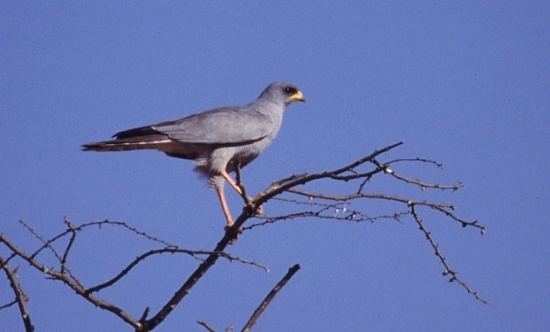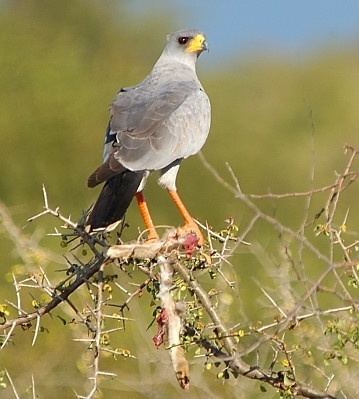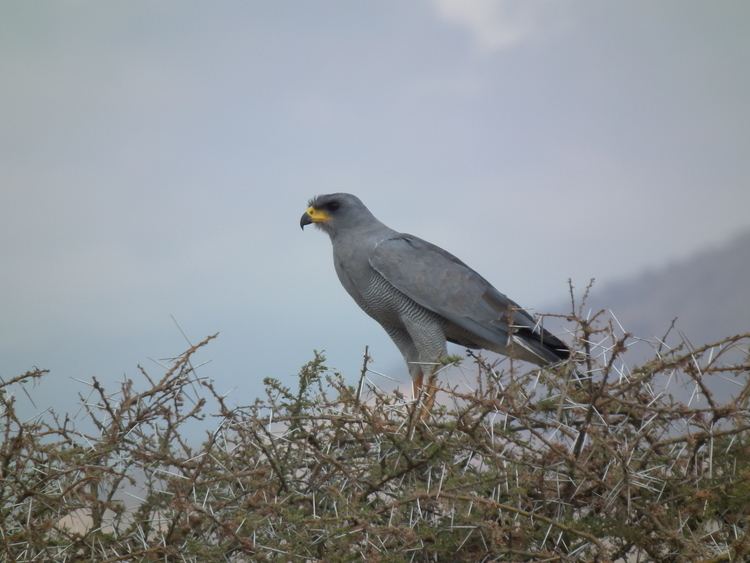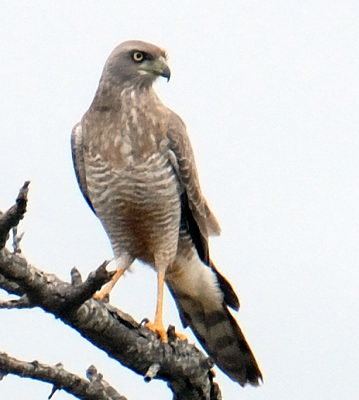Rank Species | Class Aves Genus Melierax Phylum Chordata | |
 | ||
Similar Melierax, Dark chanting goshawk, Pale chanting goshawk, Doria's goshawk, Pied goshawk | ||
Eastern chanting goshawk
The eastern (pale) chanting goshawk or Somali chanting goshawk (Melierax poliopterus) is a bird of prey of East Africa.
Contents

Eastern chanting goshawk
Taxonomy

This species is intermediate between the smaller dark chanting goshawk (widespread to the west and south) and the pale chanting goshawk (southern Africa) in colour, size, and leg length, but not in range. It has often been considered a subspecies of the latter, but because of this disparity between geography and characters, it is now considered a separate species, as agreed by many authorities.
Description

This species averages 49 to 55 cm long, with a wingspan of 96 to 110 cm and a tail length of 20 to 25 cm. Males average 85% of the size of females. Like the other chanting goshawks, it resembles an accipiter but the tail is shorter and graduated (the feathers increase in length from the edges to the center), and the wings are broader.

Adults have grey head, neck, breast, and upperparts, except for the white or lightly barred uppertail coverts. The belly has narrow grey and white bars and the undertail coverts are white. The belly and wing linings are white, the secondaries are light grey, and the primaries are dark, giving an impression from below of a white bird with grey head and dark wingtips. The tail is blackish above and white below with grey bars. The cere is yellow, and the legs are orange-red. Juveniles are dull brown above with a pale stripe over the eye. They have white underparts with brown streaks on the throat and breast, brown bars on the belly coverts, and faint or no barring on the undertail coverts. The tail is brown with widely spaced darker brown bars. The rump is white, partially barred or unmarked. They are indistinguishable from some juvenile dark chanting goshawks except for the less barred undertail coverts and rump. Also, the legs are slightly longer at all ages than the dark chanting goshawk's.
Distribution and habitat
It occurs in semidesert, dry bush, and wooded grassland up to 2000 m in southern Ethiopia, Djibouti, western Somalia, eastern Kenya, northeastern Tanzania, and adjacent Uganda.
Behaviour
The eastern chanting goshawk is usually seen alone. It often perches on the tops of trees and utility poles. Its wingbeats are shallow and "straight-arm". It holds its wings flat, or sometimes in a V, when it glides.
Its calls are "a melodious piping whee-pee-pee-pee, and a long high-pitched kleee-yeu", slightly lower-pitched than those of the dark chanting goshawk, or "peeu-peeu-peeu-pee-pee-pee-pee..." in the nesting season, the source of its name.
